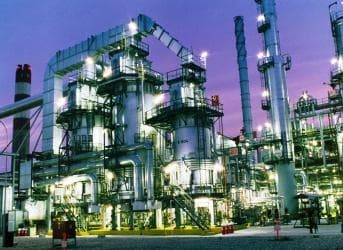2013 has been a bumper year for United States’ refineries and it is in no small part thanks to its largest overseas market -- Latin America.
Although Latin America’s oil production has grown steadily in recent years, the region’s refineries have been unable to keep pace with rising demand, particularly in the transport sector. The shortfall has prompted Victorio Oxilia, president of the Latin American Energy Organization (OLADE), to declare the increase in petroleum product imports one of the region’s most pressing energy concerns.
There are several reasons for this. One is simply insufficient investment in local refining capacity. This is changing, with several projects underway. Interestingly the Chinese, who have been significant financiers of upstream oil operations across Latin America, have begun investing in the downstream sector. The China National Petroleum Corporation’s (CNPC) investment in the $12 billion Pacific Refinery in Ecuador is just one example, and we are likely to see more in coming years.
Another reason for the region’s relative decline in refining capacity is tightening regulations, meaning that pre-exciting refineries are unable to produce the quality of gasoline or diesel that meets national standards. Constructing more complex refineries capable of producing various fuel grades requires enormous investment.
This is complicated by the fact that the refining sector in many Latin American countries remains tightly controlled by the State, which limits opportunities for private investment.
Related article: The One Thing You Need to Follow in LNG
Brazil’s refining sector highlights many of these challenges. The country’s refining capacity – estimated at just over 2 million barrels per day – has been outpaced by its demand for gasoline and diesel, leading the state-owned oil company Petrobras to import both fuels at great expense.
While two refineries are currently under construction, the first of these in Pernambuco state has been severely delayed and will not be finished until 2014 at the earliest. Possible joint ventures with the China Petroleum & Chemical Corporation (Sinopec) and South Korea’s GS Energy Corporation are under consideration but would not be ready till several years later.
If current consumption trends continue, and these additional ventures do not materialize, Petrobras estimates that the country’s processing shortfall will reach close to 1 million barrels per day by 2020. In the meantime, Brazil must import the necessary value-added petroleum products and sell them at a loss on the subsidized domestic market.
But while countries like Brazil have clear financial incentives to boost their refining capabilities, others such as Mexico that finds itself in close proximity to cheap, abundant exports may not.
Indeed, one of the most important global energy trends in the last five years has been the emergence of abundant unconventional resources across the Western Hemisphere but nowhere has this had more impact than in the United States. The success of the energy revolution in the United States means that its refineries will continue to provide stiff competition for those in the rest of the Hemisphere.
US Gulf Coast refineries have responded quickly to rising global demand, and Latin America has become their largest overseas market. US refined petroleum exports rose 260 percent from 2005 to 2012, and were at 2.8 million barrels per day (bpd) in June 2013 according to the US Energy Information Administration (EIA). Over half of these exports are destined for Latin America and the Caribbean. Over a quarter go to Mexico, Brazil and Chile alone.
These figures should not come as a surprise. Mexico, Chile, and Brazil have seen strong economic growth in recent years, bringing with it an expanded middle class and a commensurate appetite for consumer goods, including cars. Unable to meet the gasoline and diesel demand at home, Latin America’s large economies in particular have turned to the United States.
US petroleum product exports to Mexico have nearly tripled since 2004 according to the EIA, reaching 440,000 bpd in June 2013. According to Mexico’s National Statistics Institute INEGI, the country’s middle class accounts for around 40 percent of the population.
Related article: Tight Global Oil Supplies Turn Syria into an International Problem
In Brazil the figure is even higher at 52 percent. Since 2004, petroleum product exports to Brazil have climbed from 11,000 bpd in January 2004 to over 200,000 bpd in June 2013.
And while US legislation restricts crude exports, there are no such limitations on refined petroleum products leaving US shores, with refiners taking advantage of these favorable conditions.
Now, if these factors are indicative of a trend towards a more integrated Western Hemisphere market for petroleum products, this is not necessarily a bad thing. Though no clear trends have yet emerged to indicate this is the case.
In the meantime, refinery upgrades and construction in Latin America are to be welcomed but it may be some time before we see any significant turnaround.
By. Alexis Arthur
Alexis Arthur is energy policy associate at the Institute of the Americas, a think tank on Western Hemisphere Affairs based in La Jolla, Calif. She regularly writes and tweets on energy and natural resources policy in the U.S. and Latin America. On the side, Alexis writes about Australia-Latin America relations. She can be reached at alexis@iamericas.org or via Twitter @IOA_Energy



















Saudi Arabia, Nigeria, Egypt (think of the crude traversing the Suez Canal and the Sumed pipeline in Egypt), Costa Rica (near Mexican and Venezuelan production), and many others are involved in China's push into refining all over the world. The consequences for oil importers will be great.